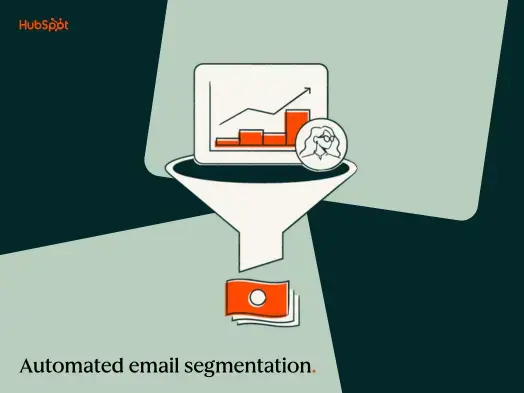
Startups are the playground of innovation. But innovation doesn’t always mean success—especially when style is mistaken for substance.
From tech to fashion, and fintech to online casinos, the same pitfall keeps showing up: an obsession with design polish, premium branding, and wow-factor visuals, while the actual functionality—what users really came for—is left behind.
Style Over Substance: The Startup Trap
In the early days of building a business, impressions matter. Founders know it. Investors know it. Designers know it. A sleek interface, bold branding, and a premium vibe can turn heads—and open doors.
But there’s a catch: when the focus is on the “wow” factor instead of the “how” factor, things fall apart fast.
Take a beautiful app that loads slowly or crashes mid-use. Or a SaaS dashboard that’s a designer’s dream—but impossible to navigate. Or a digital product that promises the moon in its marketing… but barely delivers the basics.
We’ve seen it all before. Good design makes people look—but only good execution makes them stay.
Online Casinos: The Flashiest Risk of All
If there’s one space that thrives on glamour, it’s the online casino world. Flashy graphics, mega bonuses, and luxury-style branding have become standard play. And with so many startups entering the space, the pressure to dazzle has only grown.
But here’s the problem: behind all that shine, many platforms struggle to function smoothly.
Players sign up expecting a seamless experience, only to face laggy games, confusing interfaces, delayed withdrawals, or even questionable security. In an industry where trust and timing are everything—especially for poker players—these missteps aren’t just annoying; they’re dealbreakers.
The community has learned hard lessons through industry scandals and site closures that emphasized the critical importance of choosing operators with proven integrity.
If you’re looking for a trusted platform that puts reliability over flash, especially for online poker, consider how the site handles the fundamentals: payment processing speed, game variety, traffic levels at your preferred stakes, and collision detection protocols.
While a flashy homepage might grab someone’s attention, poker players usually figure out pretty quickly what really matters: smooth gameplay, fast withdrawals, and fair dealing. That’s why these players try to see more and use online casinos that prioritize backend performance and customer reliability over slick visuals or attention-grabbing promos. The difference shows up over time, especially during real-money games where interruptions aren’t just frustrating—they’re costly.
The Fall of Juicero
Remember Juicero? The $400 internet-connected juicer backed by top-tier investors, featuring a sleek white-and-silver design that wouldn’t look out of place in an Apple store. It was marketed as the next big thing in kitchen tech—until someone discovered you could just squeeze the juice packets by hand, no device necessary.
Despite its premium look, the product failed to deliver any real advantage. And just like that, the hype collapsed. It’s a classic case of a product that looked the part but missed the point.
Fintech Fumbles
The fintech world has seen its fair share of design-first flameouts. Some mobile banking startups launched with cutting-edge interfaces, minimalist dashboards, and hip branding that appealed to digital natives. But behind the scenes? Frequent app crashes, delayed transactions, and poor regulatory compliance.
In one notable case, a startup offered automated budgeting tools with beautiful visuals—color-coded charts, goal tracking, clean typography. But within months, users reported incorrect syncing, broken connections to bank accounts, and disappearing transaction data. No matter how nice it looked, trust eroded. The startup shut down less than a year after launch.
eCommerce and the Beepi Bust
Beepi was another stylish startup that seemed poised to revolutionize the used car market. With its clean branding and premium-feel app, it aimed to make peer-to-peer car buying as simple as shopping online.
But logistics proved harder than expected. Beepi struggled with inventory management, vehicle inspections, and customer delivery timelines. Despite a polished public image, the backend couldn’t keep up—and when the venture capital dried up, the business folded.
What Flash-First Startups Often Get Wrong
These stories aren’t rare. In fact, the “style over substance” syndrome is so common it’s almost predictable. So where do startups tend to go off-track?
- Treating design as a product, not a layer
Design is powerful—but it’s not the product itself. It’s the skin, not the skeleton. When startups obsess over how something looks before building how it works, they create a product that’s ultimately hollow.
- Launching a marketing campaign before a working product
In the race to generate buzz, many founders fall into the trap of marketing a half-finished product. But early users aren’t just spectators—they’re testers, critics, and future advocates. If they get burned by buggy features or broken promises, they don’t just leave quietly. They post screenshots. They warn others.
- Mistaking viral potential for business readiness
A viral TikTok or a headline on TechCrunch can drive a flood of traffic. But traffic is only a blessing if your servers can handle it, your product doesn’t buckle under pressure, and your support team isn’t overwhelmed. Style-driven startups often aren’t ready for what they’re asking for.
- Confusing branding with value
A great brand is clear, consistent, and aligned with the product. But sometimes startups think branding is the value. A modern logo, a cool domain name, a trendy tone of voice—these are helpful, but only if the underlying experience delivers.
How Startups Can Get It Right
The good news? Style and substance aren’t mutually exclusive. The most successful startups know how to balance both—and they tend to follow a few key principles.
- Start with what works. Every product should solve a problem. Before hiring a branding agency or rolling out a marketing campaign, founders should ask: does this work? Can a real user complete a task easily, without guidance, and want to return? A Minimum Viable Product doesn’t need to be pretty. It just needs to work well. Design can always be layered in later.
- Build infrastructure for growth. Whether it’s a poker app or a marketplace, stability matters. Slow load times, downtime, or delayed payments kill trust. Investing early in infrastructure—servers, redundancy, scalable tech—pays off when users start showing up in numbers.
- Design to support, not distract. Good design isn’t about decoration—it’s about clarity and proper strategy. Can users find what they need? Is navigation intuitive? Are visual cues helping or just showing off? Design should always serve the user, not the designer.
- Market with honesty. Forget the hype. Users are savvier than ever. Startups that win long-term loyalty are transparent about what their product does—and what it doesn’t (yet). They use real testimonials, clear demos, and honest positioning. If something’s still in beta, say so. If a feature is coming soon, don’t pretend it’s live.
The Truth Always Surfaces
At the end of the day, users don’t stay for a logo. They stay for a product that solves a problem, works consistently, and makes their life easier. Sure, style will get people in the door. But substance is what keeps them from walking out.
The startups that survive—and thrive—are the ones that figure this out early. They build products that function beautifully before worrying about how beautifully they function. They don’t confuse polish with purpose.
So whether you’re designing the next big thing in fintech, fashion, or poker—build the bones first. Then add the shine.









